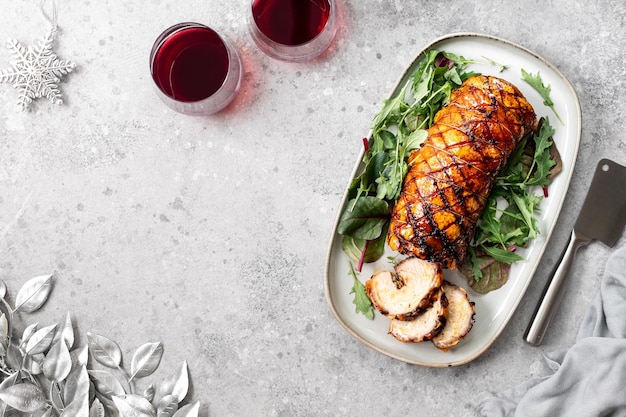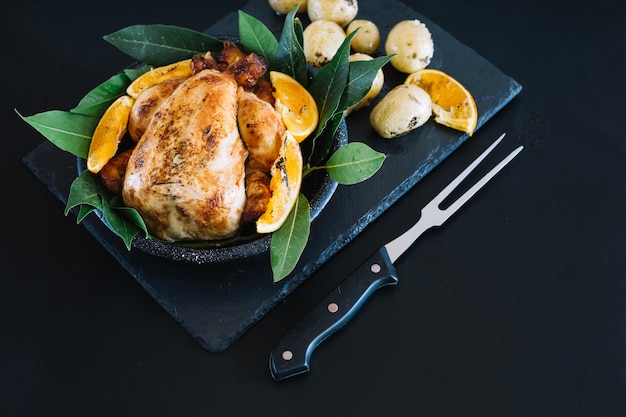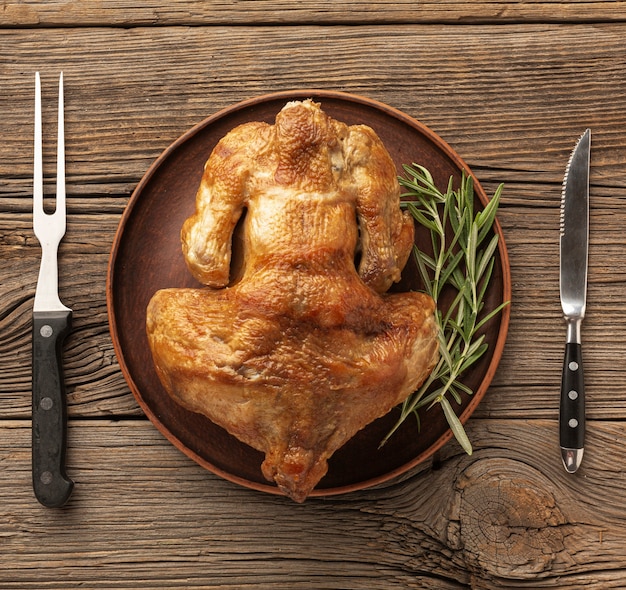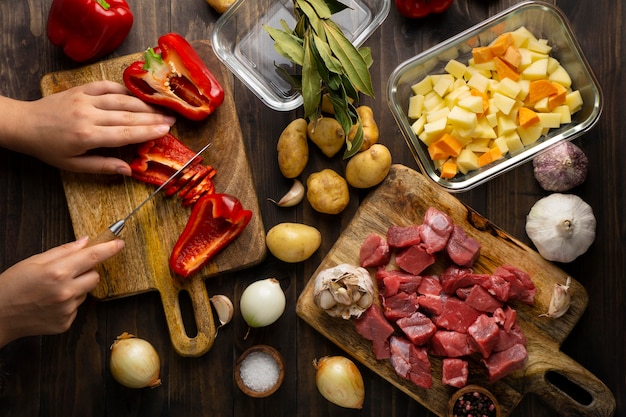There's something about pheasant that just screams elegance, a touch of luxury in the everyday. The delicate flavour, the tender texture, the way it evokes a sense of rustic charm - it's a dish that always feels special. But for years, I'd shied away from cooking it myself. It seemed like a culinary hurdle I wasn't quite ready for, reserved for those seasoned chefs who knew the secrets of coaxing out the perfect pheasant. Then, a friend shared a simple pan-fried pheasant breast recipe, and my world changed. It was ridiculously easy, incredibly delicious, and made me feel like I'd somehow unlocked a secret culinary skill.
Now, I'm on a mission to share that same magic with you. This article will walk you through the entire journey of cooking pheasant breast, from choosing the perfect bird to crafting a truly memorable meal. Get ready to learn the ins and outs, the tips and tricks that make all the difference. Let's dive in!
(Part 1) Choosing Your Pheasant: The First Step to Success

You know how they say, "you can't make a silk purse out of a sow's ear"? Well, the same principle applies to pheasant. Starting with a good quality bird is crucial for a truly delicious dish. It's like the foundation of a house – if it's shaky, the rest of the structure won't stand a chance.
Finding Your Pheasant: Where to Look
Pheasant isn't always the easiest bird to find, but it's well worth the search. You'll have the best luck at good quality butchers, especially those located in areas with a strong game tradition. If you're lucky enough to live near a farm or gamekeeper, they might even have their own pheasant for sale. These birds are often raised outdoors, leading to a richer, more nuanced flavour. Butcher shops are a great place to ask questions and learn more about the source of the pheasant you're buying. Online butchers are becoming increasingly popular too, offering a wider range of options and potentially easier access for those living in areas where pheasant is less common.
What to Look For: Identifying a Quality Bird
Now, you've found your source for pheasant. Here's how to make sure you choose the best one:
- Freshness: The first sign of a good pheasant is its appearance. The skin should have a vibrant, slightly rosy colour, not dull or grey. The flesh should be firm and springy to the touch. If it feels soft or mushy, it's probably not as fresh as it should be.
- Size: For pheasant breast, you're aiming for a bird weighing between 1.5kg to 2kg. This will give you a generous amount of breast meat to work with, ensuring there's plenty to share (or enjoy yourself!).
- Plucking: Most butchers will have already plucked and cleaned the pheasant for you. However, if you're getting it directly from a farm or gamekeeper, ask them about plucking. It should be properly plucked, ensuring there are no feathers left behind.
Storing Your Pheasant: Keeping it Fresh
You've found your perfect pheasant. Now, it's time to make sure it stays fresh and ready for cooking. Keep it refrigerated for up to 2 days, wrapped tightly in cling film. If you need to store it longer, you can freeze it for up to 3 months. However, keep in mind that the texture may change slightly after thawing.
(Part 2) Preparing the Pheasant Breast: Getting Ready to Cook

You've got your pheasant. Now, let's get ready to cook! This is the stage where we take our beautiful bird and transform it into a culinary masterpiece.
Skinning the Pheasant Breast: A Matter of Preference
This step is entirely optional, but I find skinning the pheasant breast can lead to a more tender and flavorful dish. The skin can sometimes be a bit tough, especially if the bird is older. If you're keeping the skin on, you can score it with a sharp knife to allow the fat to render during cooking, adding flavour and moisture to the breast. If you'd rather skin it, use a sharp knife and carefully pull the skin back from the breast, working your way along the length. You can also ask your butcher to skin the pheasant for you, saving you time and hassle.
Trimming the Pheasant Breast: Eliminating Excess
Now, whether you've kept the skin on or taken it off, it's time for a little trim. Remove any excess fat or connective tissue from the breast. This will help to prevent it from becoming chewy or tough, making for a more tender and enjoyable eating experience.
Salting and Seasoning: Adding Depth of Flavour
This is where the real magic begins. We're going to give our pheasant breast a flavour boost with a simple salt and pepper rub. It's not just about seasoning; it's about flavour development. Salting the pheasant breast at least 30 minutes before cooking is crucial. It allows the salt to penetrate the meat, drawing out some of the moisture and promoting a more tender, juicy result. It also helps to develop a more intense, complex flavour profile. You can also add a touch of your favourite spices, like thyme, rosemary, or even a pinch of paprika, to enhance the flavour even further.
(Part 3) Pan-Frying the Pheasant Breast: The Heart of the Dish

You've chosen your pheasant, prepped it perfectly, and now it's time for the star of the show: pan-frying. It's a simple technique, but it makes all the difference in achieving that perfectly cooked pheasant breast.
Getting Your Pan Ready: A Foundation for Success
Start by heating a heavy-bottomed pan over medium heat. This will ensure even cooking and prevent the pheasant from sticking. I find that a cast iron pan works beautifully, but any sturdy pan with a good base will do the trick.
Adding Fat to the Pan: The Secret to Moistness
To ensure the pheasant cooks evenly and doesn't stick to the pan, you'll need a bit of fat. My go-to is duck fat, which adds a rich, buttery flavour that complements the pheasant beautifully. You can also use butter, olive oil, or a combination. But remember, let the fat get properly hot before adding the pheasant. This will create a beautiful sear, sealing in the juices and enhancing the flavour.
Sealing the Pheasant Breast: Creating a Delicious Crust
This is the crucial moment – the moment we create that irresistible golden-brown crust. Place the pheasant breast in the hot pan and cook for 2-3 minutes per side, or until it's nicely browned. Resist the urge to move it around too much! The goal is to create a beautiful, even sear, locking in those delicious juices and developing a rich, caramelized flavour.
Finishing the Pheasant Breast: Achieving Tender Perfection
Once the pheasant is beautifully browned, it's time to bring the heat down a notch. Reduce it to low, cover the pan, and let it cook for another 3-4 minutes. This allows the breast to cook through, reaching that perfect medium-rare texture.
Checking for Doneness: The Art of Perfect Timing
The moment of truth – making sure your pheasant breast is cooked to perfection. A meat thermometer is your best friend here. Aim for an internal temperature of 145 degrees Fahrenheit (63 degrees Celsius) for medium-rare. If you don't have a meat thermometer, gently press on the thickest part of the breast. If it feels springy to the touch, it's ready.
(Part 4) Resting the Pheasant Breast: A Vital Step for Tenderness
Here's a secret that many novice cooks overlook: resting is just as important as cooking. Think of it as giving your pheasant a little time to unwind after its culinary adventure. Just like a good wine needs to breathe, pheasant needs time to redistribute its juices, resulting in a more tender and flavorful experience. Rest the pheasant breast for at least 5-10 minutes before carving and serving.
(Part 5) Serving Your Pheasant Breast: The Grand Finale
It's almost time! The pheasant breast is cooked to perfection, resting peacefully, and ready to be the star of your meal. Now, let's add the final touches to create a truly unforgettable dish.
Choosing Accompaniments: Balancing Flavours and Textures
Pheasant is like a chameleon, pairing beautifully with a wide range of flavours. For a classic approach, consider serving it with seasonal vegetables like roasted root vegetables, braised greens, or a simple salad. If you're feeling adventurous, try pairing it with fruit like apples or pears, or even a bold flavour like cranberries. The key is to find pairings that complement and enhance the pheasant's delicate flavour, creating a harmonious symphony of taste.
Carving the Pheasant Breast: A Skill Worth Mastering
Carving a pheasant breast is a skill that takes a bit of practice, but it's not as intimidating as it may seem. The goal is to slice it thinly against the grain, ensuring a tender, bite-sized texture. If you're not feeling confident, ask your butcher to show you how. They'll be happy to share their expertise.
Plating the Pheasant Breast: Presentation Matters
The way you present your dish is just as important as the taste. For a simple and elegant presentation, arrange the pheasant slices on a serving platter or individual plates. Don't be afraid to get creative with your plating! Use sprigs of herbs, a drizzle of sauce, or even a sprinkle of edible flowers for a touch of sophistication.
(Part 6) Sauces for Pheasant: Elevating the Flavour
While pheasant is delicious on its own, a sauce can take it to the next level, adding a touch of richness and complexity. There's a sauce for every palate and occasion, so let's explore some options:
Classic Pan Sauce: Simple Elegance
A pan sauce is a classic for a reason – it's simple to make, incredibly flavorful, and perfectly complements the pheasant. To make a classic pan sauce, simply deglaze the pan with a little wine or stock, scraping up any browned bits from the pheasant. This adds a depth of flavour and creates a rich, flavorful base for your sauce. Then, reduce the liquid until it thickens, creating a silky sauce that clings to the pheasant. For an extra touch of indulgence, you can add a splash of cream or a knob of butter for richness.
Game Sauce: A Traditional Choice
For a more traditional game sauce, try using a red wine reduction with a touch of juniper berries and a bay leaf. The earthy, slightly bitter notes of the juniper berries and the aromatic bay leaf complement the pheasant's gamey flavour beautifully. This is a classic pairing for pheasant that adds a touch of sophistication to the dish.
Fruity Sauce: A Sweet and Savory Contrast
If you're looking for a touch of sweetness to balance the savory pheasant, try a fruity sauce like a cranberry sauce or a blackberry sauce. The tartness of the berries cuts through the richness of the pheasant, creating a beautiful contrast of flavors. This is a great option for those who enjoy a bit of sweetness in their savory dishes.
(Part 7) Leftovers and Beyond: Making the Most of Your Pheasant
You've enjoyed your delicious pheasant breast, but what about those precious leftovers? Don't let them go to waste! Leftover pheasant is like culinary gold dust, ready to be transformed into new and exciting dishes.
Storing Leftovers: Keeping the Flavour Fresh
Store any leftover pheasant breast in an airtight container in the refrigerator for up to 3 days. This will help to keep it moist and flavorful, ready for your next culinary adventure.
Using Leftover Pheasant: Endless Possibilities
Leftover pheasant can be incorporated into a wide range of dishes. You can slice it into a salad, adding a touch of protein and a rich, gamey flavour. For a hearty lunch, add it to a sandwich with a bit of mustard and your favourite toppings. If you're feeling ambitious, try using it to make a delicious pheasant pie. The possibilities are truly endless!
(Part 8) A Feast for the Senses: The Essence of Cooking
You've reached the end of your pheasant journey, from selecting the perfect bird to crafting a truly memorable meal. Cooking pheasant breast isn't just about creating a dish; it's about creating an experience. It's about the anticipation, the aroma filling the air, the anticipation of that first delicious bite. It's about discovering new flavors, pushing your culinary boundaries, and finding joy in the process.
FAQs: Addressing Common Questions
You've probably got a few questions buzzing around in your head. Let's tackle some common concerns:
| Question | Answer |
|---|---|
| What if my pheasant breast is too small? | Don't worry! If your pheasant breast is small, you can cook it for a shorter time. Just make sure it's cooked to the right internal temperature. A little experimentation is key to finding the perfect timing. |
| Is it okay to overcook pheasant breast? | It's important not to overcook pheasant breast. Overcooked pheasant will become tough and dry. Aim for medium-rare, which is the most tender and juicy way to cook it. Remember, a bit of pink is perfectly fine with pheasant, as long as it reaches the correct internal temperature. |
| Can I cook pheasant breast in the oven? | You can! To cook pheasant breast in the oven, preheat your oven to 350 degrees fahrenheit (175 degrees Celsius). Place the pheasant breasts in a baking dish and cook for 15-20 minutes, or until the internal temperature reaches 145 degrees Fahrenheit (63 degrees Celsius). You can also roast pheasant breast with vegetables for a complete meal. |
| What are some other ways to cook pheasant breast? | You can also roast, grill, or even poach pheasant breast. Experiment and find what works best for you! Each method offers unique flavours and textures, so don't be afraid to explore different cooking techniques. |
| What are some other game birds I can try? | If you enjoy pheasant, you'll probably love other game birds like duck, quail, and partridge. They all have their unique flavour and texture. The world of game birds is vast and full of culinary possibilities, so don't be afraid to expand your horizons. |
Now you're ready to embark on your own pheasant adventure! Remember, cooking is about exploring, experimenting, and discovering new flavors. So, don't be afraid to get creative and have fun in the kitchen!
Everyone is watching

Perfect Rice Every Time: The Ultimate Guide to Cooking Rice
Cooking TipsAs a self-proclaimed foodie, I've always been a bit obsessed with rice. It's the foundation of countless cuisi...

Ultimate Guide to Cooking the Perfect Thanksgiving Turkey
Cooking TipsThanksgiving. Just the word conjures up images of overflowing tables laden with delicious food, the scent of r...

The Ultimate Guide to Cooking Asparagus: Tips, Techniques, and Recipes
Cooking TipsAsparagus. The mere mention of this spring delicacy conjures up images of vibrant green spears, crisp and burs...

Can You Cook Spaghetti with Gasoline? (The Shocking Truth)
Cooking TipsWe've all seen those crazy internet trends. You know, the ones that make you wonder, "Did someone actually try...

Chorizo and Eggs Recipe: The Ultimate Guide
Cooking TipsRight, let’s talk about chorizo and eggs. You know, that classic Spanish dish that's always a winner. It's th...
